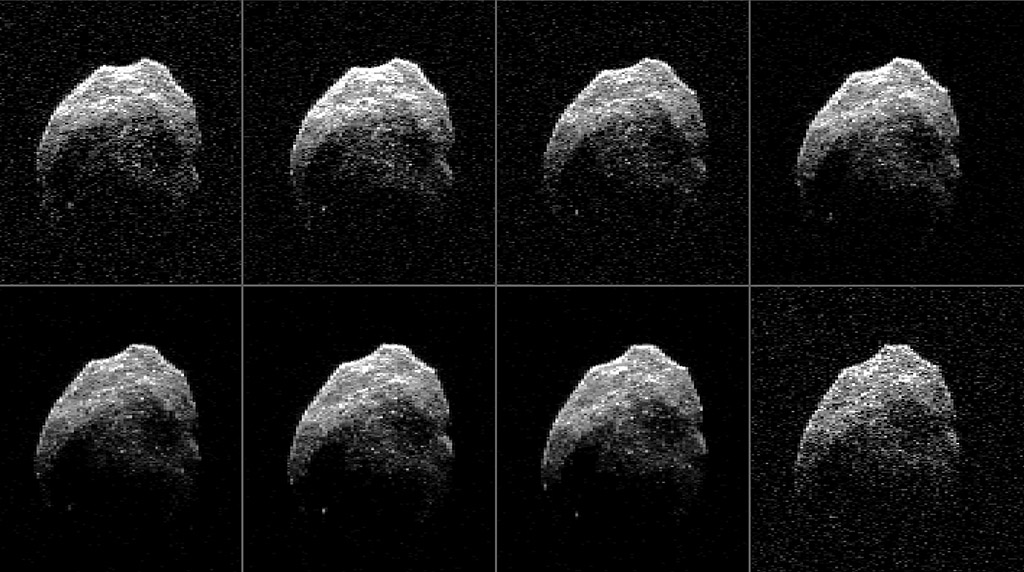Written by DC Agle
NASA’s Jet Propulsion Laboratory
 Pasadena, CA – The highest-resolution radar images of asteroid 2015 TB145’s safe flyby of Earth have been processed. NASA scientists used giant, Earth-based radio telescopes to bounce radar signals off the asteroid as it flew past Earth on October 31st at 10:00am PDT (1:00pm EDT) at about 1.3 lunar distances (300,000 miles, or 480,000 kilometers) from Earth.
Pasadena, CA – The highest-resolution radar images of asteroid 2015 TB145’s safe flyby of Earth have been processed. NASA scientists used giant, Earth-based radio telescopes to bounce radar signals off the asteroid as it flew past Earth on October 31st at 10:00am PDT (1:00pm EDT) at about 1.3 lunar distances (300,000 miles, or 480,000 kilometers) from Earth.
Asteroid 2015 TB145 is spherical in shape and approximately 2,000 feet (600 meters) in diameter.

Radar images of asteroid 2015 TB145 acquired by Arecibo Observatory are available at these sites:
http://on.fb.me/1MahsY8
New animation by #TeamRadar of #2015TB145 using @NAICobservatory on November 1: pic.twitter.com/Isz0Gafuop
— Arecibo Radar (@AreciboRadar) November 2, 2015
To obtain these highest-resolution radar images of the asteroid, scientists used the 230-foot (70-meter) DSS-14 antenna at Goldstone, California, to transmit high-power microwaves toward the asteroid. The signal bounced off the asteroid, and its radar echoes were received by the National Radio Astronomy Observatory’s 100-meter (330-foot) Green Bank Telescope in West Virginia. The radar images achieve a spatial resolution as fine as 13 feet (4 meters) per pixel.
The next time that asteroid 2015 TB145 will be in Earth’s neighborhood will be in September 2018, when it will make a distant pass at about 24 million miles (38 million kilometers), or about a quarter the distance between Earth and the sun.
NASA places a high priority on tracking asteroids and protecting our home planet from them. In fact, the U.S. has the most robust and productive survey and detection program for discovering near-Earth objects (NEOs). To date, U.S. assets have discovered about 98 percent of known NEOs.
In addition to the resources NASA puts into understanding asteroids, it also partners with other U.S. government agencies, university-based astronomers, and space science institutes across the country, often with grants, interagency transfers and other contracts from NASA, and also with international space agencies and institutions that are working to track and better understand these objects.
In addition, NASA values the work of numerous highly skilled amateur astronomers, whose accurate observational data helps improve asteroid orbits after they are found.
JPL hosts the Center for Near-Earth Object Studies for NASA’s Near-Earth Object Observations Program within the agency’s Science Mission Directorate.
More information about asteroids and near-Earth objects is at these sites:
http://neo.jpl.nasa.gov
http://www.jpl.nasa.gov/asteroidwatch



